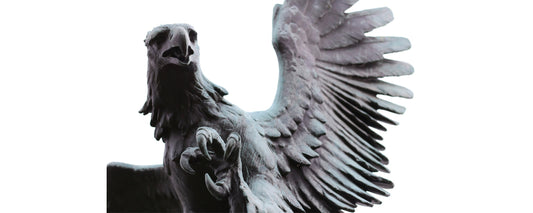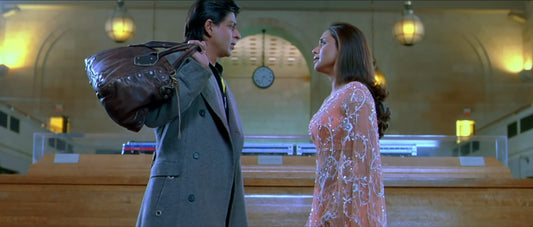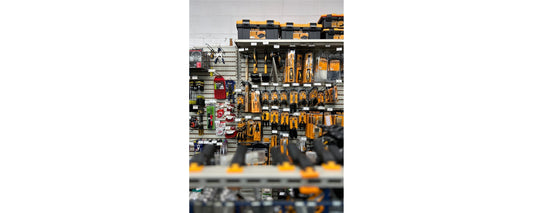Oh, to live in New Haven when art is in bloom!
For weeks, tourists have been flocking to see the new and improved Yale University Art Gallery. One of the first things they learn? They should have planned a longer trip. There is way more beauty, creativity and wonderment than any person can absorb in a single visit. This is where area residents are blessed. They can pop into the gallery any time. It’s open six days a week and charges no admission fee. Saturday and Sunday visiting times have even been extended by a couple of hours.
When the gallery reopened last month after years (or decades, depending how you count) of renovations, art lovers streamed through the place at the rate of thousands a day. Praises for the expanded exhaustive exhibitions was sung far and wide in international art magazines and such august periodicals as The New York Times, The New Yorker and The Boston Globe.
sponsored by
Tempered by the holidays, Yale’s winter break and some very cold days, attendance is currently in the manageable hundreds.
We nearby-types can gaze at leisure, not collapse from art exhaustion. We can wait patiently for the ice to melt so that the sculpture garden can be safely navigated. We can savor the hundreds of works belonging to Yale which have been hidden in storage areas but are now on prominent display. We can marvel at the renovations which accommodate all these artworks, a clever cohesion of old and modern building elements which mirror the scope and breadth of the art they contain. There are stone pedestals and glass windows, ornate arches and streamlined metal threshholds. Everything fits.
The permanent collections deserve their permanence, and the temporary ones are welcome incursions. The modern art show on the first floor, collectively titled Once Removed, lives up to that name partly by not sticking labels of the works’ own titles and creators on fussy little signs. Those details are removed to a large newsprint program/map, making for less cluttered walls and an uninterrupted flow from piece to piece. The media commentary of Allen Rupperberg’s Poems/Placemats complements the old film projector screening Marcel Broodthaers’ Voyage on the Northern Sea slideshow.
In the permanent collections upstairs, there are similar connections and balances to be enjoyed. Robert Motherwell’s work gets room to breathe, but also can be appreciated in respect to the Rothkos and Reinhardts which hang near it.
Such flow, connections, relations and unities are what truly distinguish this awesomely reworked building as a whole. Areas of the building that used to be closed off to the public are now an essential part of the art viewer’s journey. There are also whole new corridors, stairways, and a fourth-floor sculpture terrace.
The design of the galleries adds to that glorious flow, drawing you forward from religious iconography to science-based late 19th century pointillism. You glide willingly with the images, until you just have to stop because, my god, there’s a Van Gogh, and right near it several Gauguins! In one unobtrusive corner of the extensive 20th century European gallery area, you find five Degas paintings alongside two equally enchanting Pissarros. A Rodin sculpture glares at you, daring you to leave its room.
Even the gallery areas which were settled years ago and were essentially untouched by the more recent renovations seem new and fresh in the context of the whole magnificent building.
The modern art areas are as overwhelming and grandiose and culture-affirming as the ancient or centuries-old ones. You almost want to cry at the sheer glory of it all, even when that glory might be a Jean-Michel Basquiat canvas with words such as “woofs,” “larynx” and “ass” scrawled on it. Many items on display transcend their roles as interesting art and proclaim themselves as significant statements of their times. Marcel Duchamps’s snow shovel, or this text (which, in a stylish upper case font, fills a canvas credited to John Baldessari):
SOLVING EACH PROBLEM AS IT ARISES
IT CAN BE SUBJECT MATTER OF A RELIGIOUS NATURE, A SCENE IN A FOREIGN COUNTRY. WHATEVER THE SUBJECT, THE PROFESSIONAL ARTIST MAKES EXHAUSTIVE STUDIES OF IT. WHEN HE FEELS THAT HE HAS INTERPRETED THE SUBJECT TO THE EXTENT OF HIS CAPABILITIES HE MAY HAVE A ONE-MAN EXHIBITION WHOSE THEME IS THE SOLUTION OF THE PROBLEM. IT IS SURPRISING HOW FEW PEOPLE WHO VIEW THE PAINTINGS REALIZE THIS.
Baldessari painted that statement in the mid-1960s. It will be interesting to see how many enthralled visitors to the Yale University Art Gallery realize how many problems that institution has so impressively solved when figuring out how to best show off the priceless and boundless works it owns and exhibits.
Luckily, we live in New Haven. We have the time to fully appreciate this monumental achievement, and to applaud it accordingly.
Yale University Art Gallery
1111 Chapel St, New Haven (map)
Tues-Wed 10am-5pm, Thurs 10am-8pm, Fri 10am-5pm, Sat-Sun 11am-5pm
(203) 432-0600
www.artgallery.yale.edu
Written and photographed by Christopher Arnott.








